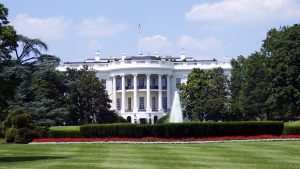U.S. president Donald Trump has signed an executive order, part of which requires 95 per cent of steel and iron used in any federal infrastructure contract to be sourced from American firms and the Canadian Steel Producers Association (CSPA) says it’s a step in the wrong direction.
“Overall we are discouraged,” said Catherine Cobden, CSPA president. “It really is a step in the wrong direction between two countries that want to have fair and free trade. We are in the middle of seeking ratification of the new United States-Mexico-Canada Agreement (USMCA), as well Canada and the U.S. share highly integrated steel markets, so it really makes no sense, from our perspective, to have this sort of requirement placed on us. It has had and will continue to have a negative effect on our industry.”
The executive order, signed July 15 at a White House “Made In America” event, is the third such order which proposes to strengthen the Buy American Act by reducing the threshold for the amount of foreign material that can be used in an end product.
Fifty (per cent) was already having a chilling effect on Canadian steel,
— Catherine Cobden
Canadian Steel Producers Association
“It is the policy of the United States to buy American and to maximize, consistent with law, the use of goods, products, and materials produced in the United States,” indicates the order issued by Trump. “To those ends, my administration shall enforce the Buy American Act to the greatest extent permitted by law.”
The order mandates federal agencies to purchase and use more American-made products and materials. According to reports, it is expected to gradually increase the percentage of the value of any components in Made in America products from 50 to 75 per cent. For steel products the threshold will increase to 95 per cent.
It’s important to note that these restrictions have not only been placed on Canada, Cobden said.
“The buy American provisions they’re not excluding just Canada, they exclude everybody, so they are not a targeted measure on Canada,” she explained. “It will affect every steel producing nation.”
This creates new restrictions and will make it more difficult for Canadian businesses to bid on federal government infrastructure projects south of the border.
“When you’ve got an American procurement going on that has these types of rules that apply to it, the people bidding on those projects are going to steer clear of steel from Canada because they are going to try to use as much U.S. steel as possible,” said Cobden.
“Fifty (per cent) was already having a chilling effect on Canadian steel on those projects and now moving to 95 per cent that will obviously continue on that trajectory… We’re in a better position than many others in the sense that we have North American benefits working with the U.S. and Mexico on our integrated steel markets.”
In March 2018, Trump imposed tariffs of 25 per cent on Canadian steel and 10 per cent on Canadian aluminum exported to the U.S. When the steel and aluminum tariffs were lifted in May, there was a recognition on both sides of the border that it was necessary to combat a global problem, Cobden noted.
“The global problem is an overcapacity of steel out there that is cheap, heavily subsidized by foreign governments that comes from very poor labour law environments and very poor environmental requirements,” Cobden said. “In North America we do not have that… Our view isn’t so much that the U.S. should back down but our view is that we should work together to combat this global overcapacity and look at ways to strengthen our position.”
The American Iron and Steel Institute (AISI) applauded the news from Trump, stating it “affirms his commitment to the steel industry.”
“This announcement is another positive step in ensuring the fullest possible implementation and enforcement of existing domestic procurement laws and ensuring the steel industry remains competitive,” said Thomas J. Gibson, president and CEO of AISI, in a statement.











Recent Comments